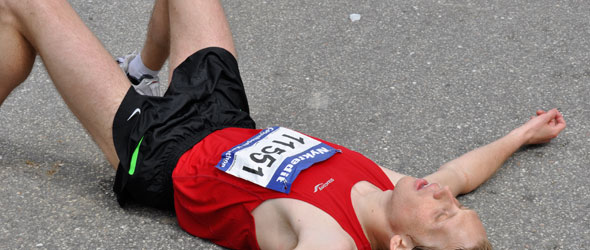Wildflower cometh, and with it the massive amounts of anxiety that can only be dealt with by obsessively playing with triathlon calculators and training data to come up with a a decently realistic set of race goals.
I took too long and too off an off season. I didn’t take it easy and do some running, biking, swimming and other fun things. I did fuck all for like two months. So I’m slower than last year. Sigh, so annoying but I did it to myself.
I can think about my long term goals, things like “Do a 5k under thirty minutes!” and “Do an Olympic tri in three hours!” but those are to be worked at for years. Those are goals where the process must be savoured, cuz I’m gonna be working on that shit for aaaagggggeeeesssss……..
I can think about my comparative goals. I always compare my speed to the pros on the ITU/Olympic circuit. I try to go half as fast as they do.
For instance, Carolina Routier swam 1500 meters in Abu Dhabi on March 5, 2016 in 18:48 which is just under 1:15/100 meters. I want to swim the swim at Wildflower in 37:36 2:30/100m twice her time. This goal is a bit tricky when you’ve got either tide or current at play (Oakland Triathlon was against the flood tide last year, thus, slow as dirt swim).
Wildflower is in a lake, so it should be relatively fast. There is no pro field in the race I am doing. The best women’s swim time last year was 19:12 for a 38:24 or 2:20/100 y. I think I can do that! When I do pull buoy sets I can hold 2:22 easily so I’m going to set 38:24 as the goal for the swim.
Last year’s best bike time was 1:17:19 19.2 mph. That’s pretty slow, so the hills are a big impact.
And I have no idea how fast I am right now, in any capacity, on the bike. I do my very hard bike work on the trainer – which is great for hitting power targets and watching fun videos. It sucks for translating into road speed. You can’t take your bike wheel speed because the trainer resistance is very different from pedaling on the road.
I really want to average 16 mph because that’s about what I did for my last Oly tri. Averaging 16 mph on this course would actually make me faster than I was on the flat course from last year. I have been training really hard and I raced that race too easy.
and the run. Is split into two parts. Due to the drought, when we come out of the water, we have to run 2.2 miles to our bikes. After we bike, then we run the other 4 miles. So, ummm, how the hell do you plan the pace?
Heart rate! If I am planning to race for 3:30 – 4:00 then I should be staying in the high zone 3, low zone 4 heart rate zones. That’s it, just forget about pace and focus on effort. Yeah, I’d like to do the run in something like 1:10 – 1:15 but it’s hilly and it’s going to be hot so I have no idea if that’s realistic in any way.
I should stop bloody worrying about speed and focus on racing at the right intensity so I don’t blow myself up trying to hit an unrealistic pace target. Which means ignore just about everything I’ve written so far (except the swim part, that’s still valid).
My goal for Wildflower is to race in Zone 3 to low Zone 4 for the entire bike and run. That means not going too hard on the uphills and pushing the downhills.
Effort, effort, effort. Sounds like a triathlon, actually.
-fh










